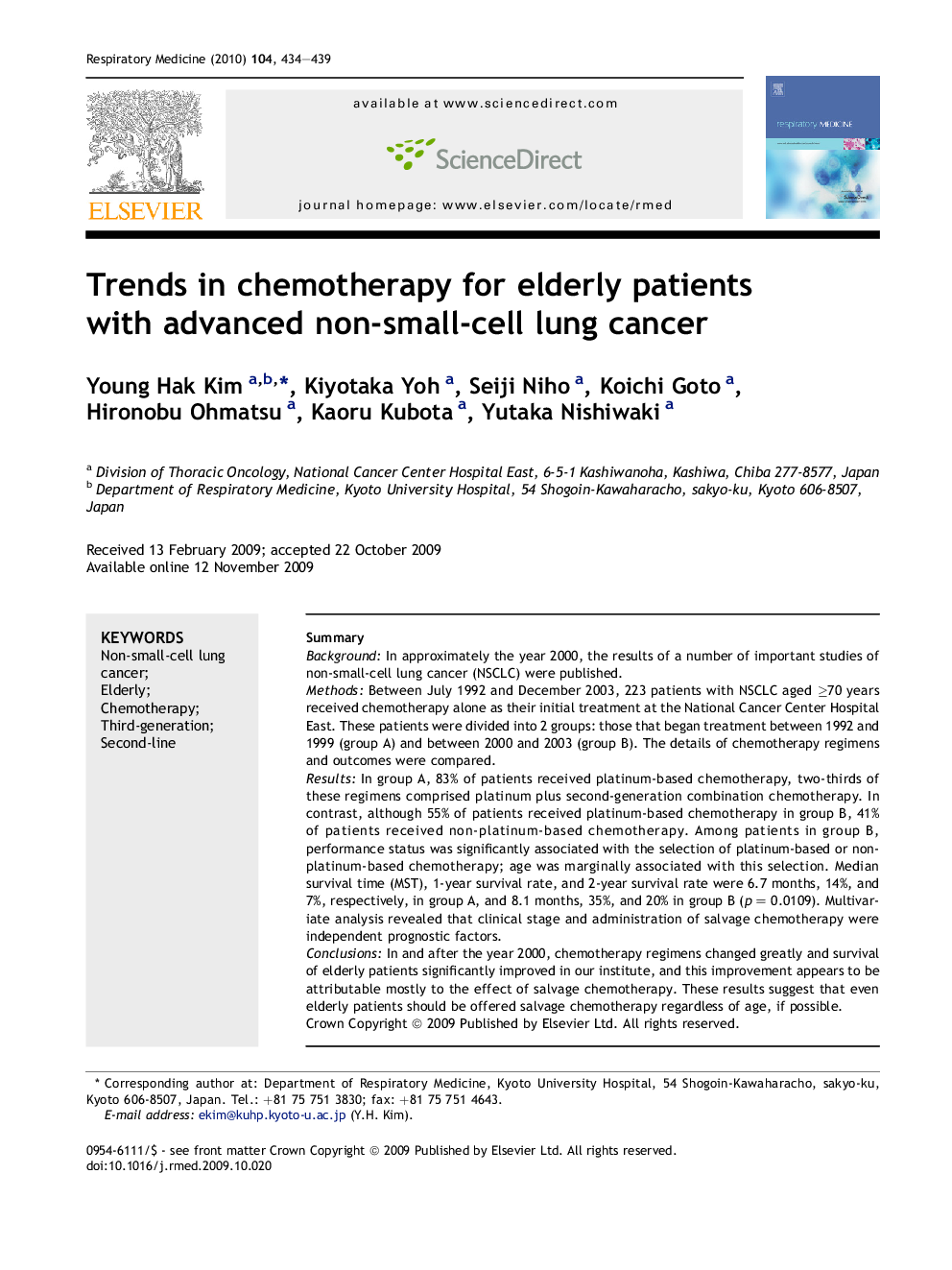| Article ID | Journal | Published Year | Pages | File Type |
|---|---|---|---|---|
| 4210592 | Respiratory Medicine | 2010 | 6 Pages |
SummaryBackgroundIn approximately the year 2000, the results of a number of important studies of non-small-cell lung cancer (NSCLC) were published.MethodsBetween July 1992 and December 2003, 223 patients with NSCLC aged ≥70 years received chemotherapy alone as their initial treatment at the National Cancer Center Hospital East. These patients were divided into 2 groups: those that began treatment between 1992 and 1999 (group A) and between 2000 and 2003 (group B). The details of chemotherapy regimens and outcomes were compared.ResultsIn group A, 83% of patients received platinum-based chemotherapy, two-thirds of these regimens comprised platinum plus second-generation combination chemotherapy. In contrast, although 55% of patients received platinum-based chemotherapy in group B, 41% of patients received non-platinum-based chemotherapy. Among patients in group B, performance status was significantly associated with the selection of platinum-based or non-platinum-based chemotherapy; age was marginally associated with this selection. Median survival time (MST), 1-year survival rate, and 2-year survival rate were 6.7 months, 14%, and 7%, respectively, in group A, and 8.1 months, 35%, and 20% in group B (p = 0.0109). Multivariate analysis revealed that clinical stage and administration of salvage chemotherapy were independent prognostic factors.ConclusionsIn and after the year 2000, chemotherapy regimens changed greatly and survival of elderly patients significantly improved in our institute, and this improvement appears to be attributable mostly to the effect of salvage chemotherapy. These results suggest that even elderly patients should be offered salvage chemotherapy regardless of age, if possible.
